The cranial osteology and feeding ecology of the metriorhynchid crocodylomorph genera Dakosaurus and Plesiosuchus from the late Jurassic of Europe
- PMID: 23028723
- PMCID: PMC3445579
- DOI: 10.1371/journal.pone.0044985
The cranial osteology and feeding ecology of the metriorhynchid crocodylomorph genera Dakosaurus and Plesiosuchus from the late Jurassic of Europe
Abstract
Background: Dakosaurus and Plesiosuchus are characteristic genera of aquatic, large-bodied, macrophagous metriorhynchid crocodylomorphs. Recent studies show that these genera were apex predators in marine ecosystems during the latter part of the Late Jurassic, with robust skulls and strong bite forces optimized for feeding on large prey.
Methodology/principal findings: Here we present comprehensive osteological descriptions and systematic revisions of the type species of both genera, and in doing so we resurrect the genus Plesiosuchus for the species Dakosaurus manselii. Both species are diagnosed with numerous autapomorphies. Dakosaurus maximus has premaxillary 'lateral plates'; strongly ornamented maxillae; macroziphodont dentition; tightly fitting tooth-to-tooth occlusion; and extensive macrowear on the mesial and distal margins. Plesiosuchus manselii is distinct in having: non-amblygnathous rostrum; long mandibular symphysis; microziphodont teeth; tooth-crown apices that lack spalled surfaces or breaks; and no evidence for occlusal wear facets. Our phylogenetic analysis finds Dakosaurus maximus to be the sister taxon of the South American Dakosaurus andiniensis, and Plesiosuchus manselii in a polytomy at the base of Geosaurini (the subclade of macrophagous metriorhynchids that includes Dakosaurus, Geosaurus and Torvoneustes).
Conclusions/significance: The sympatry of Dakosaurus and Plesiosuchus is curiously similar to North Atlantic killer whales, which have one larger 'type' that lacks tooth-crown breakage being sympatric with a smaller 'type' that has extensive crown breakage. Assuming this morphofunctional complex is indicative of diet, then Plesiosuchus would be a specialist feeding on other marine reptiles while Dakosaurus would be a generalist and possible suction-feeder. This hypothesis is supported by Plesiosuchus manselii having a very large optimum gape (gape at which multiple teeth come into contact with a prey-item), while Dakosaurus maximus possesses craniomandibular characteristics observed in extant suction-feeding odontocetes: shortened tooth-row, amblygnathous rostrum and a very short mandibular symphysis. We hypothesise that trophic specialisation enabled these two large-bodied species to coexist in the same ecosystem.
Conflict of interest statement
Figures





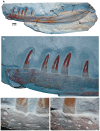
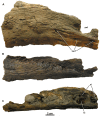

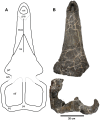
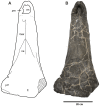

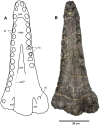
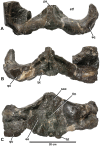
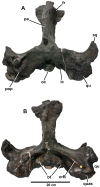




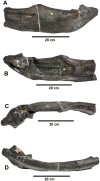
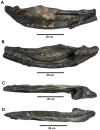
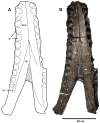




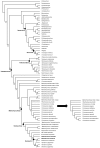
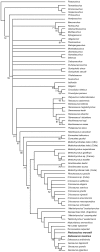


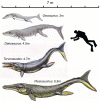

References
-
- Young MT, Brusatte SL, Ruta M, Andrade MB (2010) The evolution of Metriorhynchoidea (Mesoeucrocodylia, Thalattosuchia): an integrated approach using geometrics morphometrics, analysis of disparity and biomechanics. Zool J Linn Soc 158: 801–859.
-
- Young MT, Andrade MB, Brusatte SL, Sakamoto M, Liston J (2012) The oldest known metriorhynchid super-predator: a new genus and species from the Middle Jurassic of England, with implications for serration and mandibular evolution in predacious clades. J Syst Palaeontol. In press.
-
- Lydekker R (1888) Catalogue of the Fossil Reptilia and Amphibia in the British Museum (Natural History), Cromwell Road, S.W., Part 1. Containing the Orders Ornithosauria, Crocodilia, Dinosauria, Squamata, Rhynchocephalia, and Proterosauria. London: British Museum of Natural History. 309 p.
-
- Fraas E (1902) Die Meer-Krocodilier (Thalattosuchia) des oberen Jura unter specieller berücksichtigung von Dacosaurus und Geosaurus . Palaeontographica 49: 1–72.
-
- Andrews CW (1913) A descriptive catalogue of the marine reptiles of the Oxford Clay, Part Two. London: British Museum (Natural History). 285 p.
MeSH terms
LinkOut - more resources
Full Text Sources
Miscellaneous

